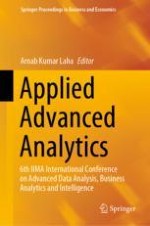2021 | OriginalPaper | Buchkapitel
Explainable Artificial Intelligence Model: Analysis of Neural Network Parameters
verfasst von : Sandip Kumar Pal, Amol A. Bhave, Kingshuk Banerjee
Erschienen in: Applied Advanced Analytics
Verlag: Springer Singapore
Aktivieren Sie unsere intelligente Suche, um passende Fachinhalte oder Patente zu finden.
Wählen Sie Textabschnitte aus um mit Künstlicher Intelligenz passenden Patente zu finden. powered by
Markieren Sie Textabschnitte, um KI-gestützt weitere passende Inhalte zu finden. powered by
